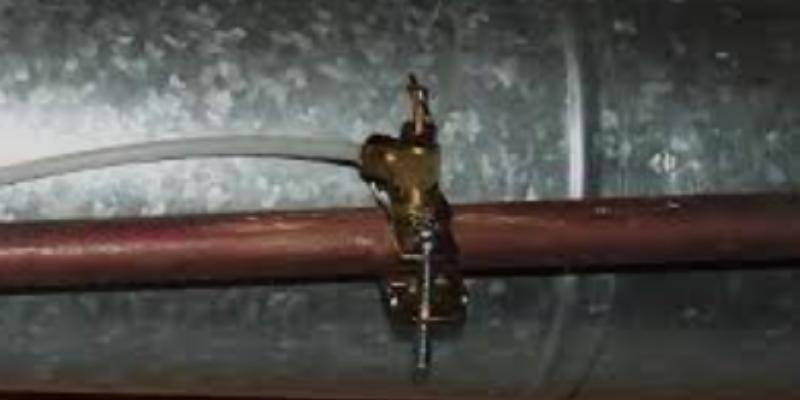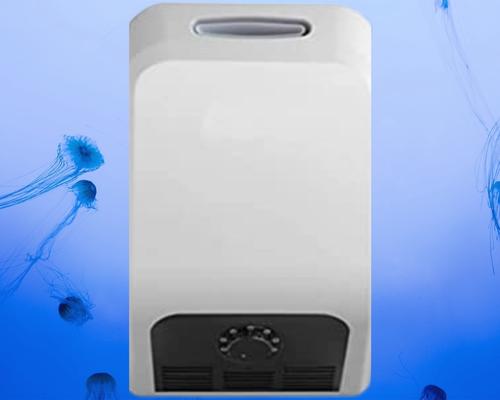If you live in a cold and mountainous region, then you know how hard winter can hit. In the winter, not only does the temperature go down, but the humidity also decreases as well. But, what’s the solution to this problem? It’s simple, a humidifier.
Now, we know a humidifier can very quickly increase the humidity in the air and provide a comforting living environment. But, to do its job, a humidifier needs a constant supply of water. That is why the reservoir of a humidifier needs to be refilled many times a day. But, it’s a drag to refill the humidifier reservoir multiple times in a day, right?
That’s why you need a humidifier with water lines (humidifiers that don’t need to be refilled). In humidifiers with water lines, the flow of water remains constant all the time. As a result, you never have to refill the reservoir of the humidifier.
Here, in this discussion, we have mentioned why you need a humidifier with water lines. And, we have also cited a top-notch humidifier product that runs on a direct water line. So, hop on to this little journey with us and go through this article in one big scoop. We can promise it will be a valuable investment of your time.
Humidifier With Water Line: How Do They Work?
The function of an ordinary humidifier is to convert water into vapor and then spread it in the atmosphere. As a result, the atmosphere becomes much more relaxing for human beings and animals in the house.

Now, for a constant supply of humidity from a humidifier, we need to continuously supply water to it. The most obvious way to do it is to refill the water reservoir of a humidifier. But, since filling the humidifier is not a long-term feasible option, we need to use a humidifier with water lines connected to it.
As a result, the water line can automatically supply a continuous stream of water to the humidifier. Then, in turn, the humidifier can continuously supply humidity to the atmosphere without any re-filling.
Components Of A Non-Refilling Humidifier:
A humidifier with water lines will have the following essential components in it:

- Water Intake Hose: It is the pathway through which the water has to be supplied. All self filling humidifiers must have this component to do their jobs.
- Overflow Hose: If somehow the water overflows the reservoir of the humidifier, the excess water can escape through the overflow hose.
- Drain Outlet Hose: This hose is used to drain excess water from the humidifier as well.
- Humidity Knob (Humidity Controller): This is a dedicated knob on a humidifier that can control the flow of moisture into the air. By using this, you may have the option to humidify your home from 30% to 90%.
- Fog Outlet: This is the opening from which the warm fog comes out.
- The Humidifier Itself: The whole humidifier is installed on a wall. In general, the installation location is the center position of the house.
How To Install A Humidifier With Water Lines?
Installation of a non-refilling humidifier is not a difficult task at all. You can follow below steps to quickly install a non-refilling humidifier in your home:

- First off, unpack the humidifier and read up the instruction manual which will give you a brief idea of how to install the product. And, it should also tell you how you can use it to its best purpose.
- Now, you need to decide on an installation location in your home for this humidifier. We recommend choosing a location that is in the center position of your house. Also, the humidifier needs to be away from walls and objects (otherwise it will cause mold accumulation in the house).
- In this step, make a few holes in the wall and, with the help of stainless steel screws, install the humidifier into the wall. The screws will come included in the humidifier package.
- After installation, the first thing to do is create a pathway for draining the excess water from the humidifier. To do this, attach a pipe to the humidifier’s drain outlet hose. That, in turn, will make a pathway for the water to travel to the home’s drainage system.
- Plus, you’ll have to install a pipe to the humidifier’s water intake hose as well. This pipe will supply water to the humidifier from the home’s water supply line. To complete the water supply pathway, you will also need to connect the other end of the supply pipe to your home’s water supply line.
For this purpose, you can use a saddle valve (saddle valves can connect to copper pipes of the home’s water supply line).
- At this point, you’ll install another pipe to the overflow hose of the humidifier. This pipe will make a pathway for the excess water to flow into the drainage system.
- At last, you’ll connect the humidifier to an electric power source.
And, just like that, You installed a humidifier with water lines.
Our Recommendation: Best Humidifier With Water Lines
For your convenience, we have chosen a non-refilling humidifier for you. It has all the necessary features that you may need. Let’s get introduced to the Ultrasonic Mist Commercial Humidifier Direct Connect Water Line,43 L Wall-Mounted Humidifier.

It’s a very lightweight commercial wall mounted humidifier (weighs about 9.9 lb), yet it has 43 liters of water-containing capacity. Furthermore, it can cover a large distance of 300 ft² (it’s a whole house humidifier). So, only one piece of this machine is enough to humidify your whole home.
Moreover, this machine works very quietly. So, you won’t have any problem using them in winter as well (as the environment becomes really quiet in winter).
This humidifier device can supply up to 1.8 kg of vapor into the water every hour. But, you can adjust the humidification rate by the humidity control knob in the machine.
The most important aspect of this device is that you don’t need to put water in it manually. Once installed, it will draw water from the water line on its own and refill its reservoir. Because of this amazing capability, it is fully compatible with all environments such as laboratories, textile mills, homes, etc.
Frequently Asked Questions
How Do I Know The Ambient Humidity Level Of My Home?
The only machine that can tell you the moisture and humidity level in your home atmosphere is a hygrometer. If you have a hygrometer installed in your home, it can precisely tell you the percentage of moisture present in the atmosphere.
Knowing how much humidity your atmosphere contains, you can easily adjust the humidification control knob on your humidifier. That way, you can easily maintain optimum humidity in your home.
How Much Humidity Is Optimum For My Home?
Depending on the weather, the optimum humidity level varies between 30% to 60%. Any humidity of more than 60% will likely cause you discomfort. And, on the other hand, humidity levels below 30% will hurt your lungs in the time of breathing.
What Is The Best Way To Decrease Humidity?
The easiest and most effective way of reducing your room humidity in a few minutes is to turn ON the ceiling fan. In case you don’t have a ceiling fan, you need to turn ON the air conditioner to reduce the humidity of your room. Or, you also buy a wall mounted dehumidifier for decreasing the humidity of your room.
Conclusion
Depending on the region you live in, your home humidity may vary massively or very slightly. However, in wintertime, you can’t really compromise on this issue. Especially for kids and pets, low humidity can be the cause of many respiratory diseases.
That’s why we recommend getting a humidifier with water lines for your home as soon as possible. If you have at least one humidifier installed in your home, you can rest assured that low humidity won’t be able to hurt your lungs anymore. At last, we bid you and your home the best of luck.
